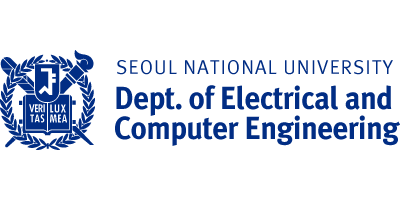Professor Byoungho Lee, three-dimensional(3D) display that does not cause eye strain (Edudonga, 20190618)

▲ Professor Byoungho Lee of Department of Electrical and Computer Engineering, SNU (left), Researcher Seungjae Lee (right)
SNU college of engineering revealed on the 18th that the research team of professor Byoungho Lee from department of electrical and computer engineering developed a tomography 3D display that overcomes the limitations of conventional 3D displays. The contribution of the research lies in the fact that the eye strain, dizziness and motion sickness problems from Head-Mounted Display(HMD) for 3D virtual reality and augmented reality were solved.
According to SNU College of Engineering, the cause of eye strain from conventional 3D display comes from the misalignment between the point where the focal points of each eye meet to see the 3D display and the point to see a clear display. Therefore, the research team tried to make the focal points of the two eyes to meet at a same point and developed a display which can handle movements of the point to multiple locations.
The tomography display proposed by the research team generates multiple single-layer images from the light of three-dimensional images. The key technology here was to find a combination of single-layer images that can generate the original light distribution most precisely. Based on the computed tomography (CT) method, the team analytically back-projected the original light distribution to find the optimal combination. This combination of single-layer images was generated with fast spatial modulation backlight, a liquid display panel, and varifocal lenses. Using the focal distance of the varifocal lens and the afterimage effect of the eye from the backlight and changes in display information, they succeeded in generating a three-dimensional display that does not cause eye strain.
The tomography display was proven by experiments that more than 80 single-layer images could be generated without reduction in resolution and frame rate. The 80 single-layer images are distributed throughout a large spectrum from 18cm to tens of meters from the eyes.
This technology is worth its recognition based upon the fact that it prevents eye strain caused while using conventional 3D display and allows comfortable user experience for the commercialization of VR and AR. Also, it can provide movie theaters with a new type of 3d display.
Researcher Seungjae Lee from professor Byoungho Lee’s team said, “The eye strain problem of conventional binocular 3d display, which was considered as a predicament was resolved. This work will be extended to eventually develop a tomography display on glasses.
This work was published in the global top journal Nature Communications on June 7th. The research was funded by Ministry of Science and Technology and the fundamental technology development project for digital contents of IITP.
Source: http://ee.snu.ac.kr/community/news?bm=v&bbsidx=48950
Translated by Kyungjin Lee, English Editor of Department of Electrical and Computer Engineering, jin11542@snu.ac.kr


